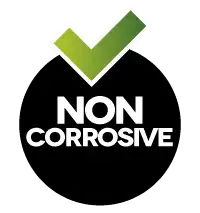
Eco-Friendly De-Icer for Sale Non-Toxic Ice Melt for Driveways & Walkways
Looking for an eco friendly de-icer that actually works? Discover EcoGrit’s non-toxic, pet- and plant-safe ice melt – perfect for UK driveways and walkways.
Monoblock paving is a highly versatile, attractive option for driveways, paths, parking areas and patios. Small blocks of stone or brick are placed in a beautiful pattern to offer a sturdy surface that can withstand heavy use. Different colours and shapes help create patterns and effects that can perfectly complement a house or adjacent building.
It is very important to care for a monoblock drive, especially in winter. Cracks and damage can cause water to seep under the surface. This water can then freeze and as well up in sub-zero temperatures, cracking or damaging the blocks even further. Other risks include dirt, algae and other residues creating a slip hazard. Also, any moss that grows and gets in between the blocks can cause them to lift up and move, creating a trip risk for pedestrians and a puncture risk for a vehicle’s tyres.
Luckily, there is plenty that a homeowner or commercial premises manager can do to protect and care for monoblock paving this winter, both before and after the temperatures plummet below zero degrees C. Here are some areas to pay attention to this winter.
Talking of layers of frozen water, it is also wise to work out how to safely melt any ice or settled snow back into the water. This is so that it can flow away from your monoblock drive without causing any skidding hazards or harming the surrounding areas with any residues of harmful products. Using rock salt or urea-based products is not at all recommended due to the corrosive nature of the residual ingredients.
Not to mention the harm rock salt and urea can do to people, pets’ paws, vehicle undersides and even household carpets and floors if they have trekked inside on someone’s shoes. Choose a pet-safe de-icer, urea and salt-free ice melt product such as EcoGrit for an effective, environmentally-friendly method of clearing ice from paved drives this winter.
Keeping a monoblock drive clean has many advantages, including aesthetics, safety and good maintenance practice. Always remove any oil or petrol spills straight away to limit the amount of damage or staining they can cause. Use a broom to clear away any ‘clean’ debris such as fallen leaves or litter. Then, use a pressure washer designed to clean paved drives for a good, deep clean.
This should be done regularly, but certainly more often in the winter when there is more chance of fallen debris from winds and when the ground is wetter, and therefore mud is more likely to be spread underfoot or via vehicle tyres. This is also important when ice or snow is expected. It will be more dangerous to have shifting debris underneath the layers of frozen water, creating an extra slipping hazard.

Moss in between the blocks can become slippery and dangerous to walk on. Left unchecked, it can also grow rapidly to take over larger drive areas. To clear it, try to work on a dry day to avoid smearing mud or wet plant matter all over the drive. Start by using a stiff-bristled broom to brush away the moss that is easy to dislodge. Then use a wire brush or wallpaper scraper and get closer to the surface to try to pick out more of the moss lurking further down in between the blocks.
Avoid rubbing too harshly, or this could damage the blocks on either side of the moss. If there is still moss remaining, consider using a pet-safe moss or weed killer product. Or use a jet pressure washer (see above) to blast any remaining roots or leaves out of the cracks.
Take time to inspect the paving stones, including the edges and any sections that could be more prone to damage, such as in damper areas or where vehicles are re-parked regularly. Mend any cracks as soon as possible to avoid water getting inside them and causing further damage when it freezes solid. Check all drainage is functioning correctly to prevent any leakages affecting the stonework or causing layers of dangerous frozen water to form in colder temperatures. You could consider applying a sealant to monoblock paved drives and other areas to help further protect them from the winter’s frost, ice and snow.
EcoGrit
The Saw Mill
Brooms Barn
Coney Weston
IP31 1HQ

Looking for an eco friendly de-icer that actually works? Discover EcoGrit’s non-toxic, pet- and plant-safe ice melt – perfect for UK driveways and walkways.
Discover how to stay ahead of winter weather with EcoGrit’s expert guidance on de-icing. Learn about our legal responsibilities and how you can keep your






EcoGrit is an environmentally conscious company that would like to serve the people by offering them education, insight, “peace of mind” and the chance to make a positive difference on a monumental scale at a time when winter weather patterns are becoming more unpredictable.
VAT (Value Added Tax) Number: 340 3662 26
Looking for an eco friendly de-icer that actually works? Discover EcoGrit’s non-toxic, pet- and plant-safe ice melt – perfect for UK driveways and walkways.
© 2023 EcoGrit Ltd